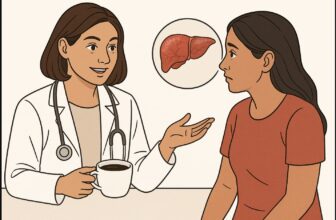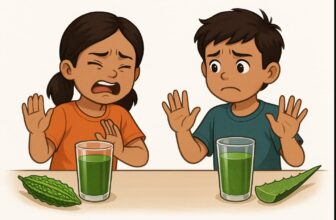What Indian Vegetables Are High in Iron?
Iron is an essential mineral that plays a crucial role in the production of hemoglobin, a protein in red blood cells that carries oxygen throughout the body. A lack of iron can lead to anemia, causing symptoms such as fatigue, weakness, and impaired cognitive function. Fortunately, many Indian vegetables are rich sources of iron and can help you maintain adequate levels of this vital nutrient.
This comprehensive guide explores Indian vegetables that are high in iron, their nutritional benefits, and ways to include them in your diet.
Why Is Iron Important?
Iron is a critical nutrient for various bodily functions, including:
- Oxygen Transport: Hemoglobin requires iron to carry oxygen to tissues.
- Energy Production: Iron plays a role in metabolic processes that generate energy.
- Immune Function: Adequate iron levels are necessary for a healthy immune system.
- Cognitive Development: Iron is vital for brain development, especially in children.
The Recommended Dietary Allowance (RDA) for iron depends on factors such as age, gender, and physiological conditions. For example, adult men require about 8 mg/day, while women aged 19-50 need 18 mg/day due to menstruation.
Types of Iron in Food
Iron exists in two forms:
- Heme Iron: Found in animal-based foods, it is more readily absorbed by the body.
- Non-Heme Iron: Found in plant-based foods, its absorption can be enhanced by consuming it with vitamin C-rich foods like lemons, oranges, or tomatoes.
Indian cuisine, with its diverse range of vegetables and spices, offers an abundance of non-heme iron sources. Let’s delve into some iron-rich Indian vegetables.
Indian Vegetables High in Iron
1. Spinach (Palak)
- Iron Content: Approximately 2.7 mg per 100 g.
- Benefits: Spinach is also high in vitamins A and C, which enhance iron absorption.
- How to Use:
- Palak Paneer: A classic North Indian dish combining spinach with cottage cheese.
- Spinach Dal: Cooked lentils with spinach make for a wholesome meal.
- Smoothies: Blend raw spinach with fruits for a nutrient-packed drink.
2. Fenugreek Leaves (Methi)
- Iron Content: About 1.93 mg per 100 g.
- Benefits: Rich in iron and also contains fiber, calcium, and vitamin K.
- How to Use:
- Methi Thepla: A Gujarati flatbread made with fenugreek leaves.
- Methi Dal: A flavorful combination of lentils and fenugreek.
- Aloo Methi: A dry curry made with potatoes and fenugreek leaves.
3. Amaranth Leaves (Chaulai)
- Iron Content: Around 2.6 mg per 100 g.
- Benefits: Loaded with iron, calcium, and antioxidants.
- How to Use:
- Amaranth Curry: A mildly spiced dish served with rice or roti.
- Stir-Fried Amaranth: Quickly cooked with garlic and spices.
4. Beetroot
- Iron Content: Approximately 0.8 mg per 100 g.
- Benefits: Contains folate, fiber, and other essential nutrients.
- How to Use:
- Beetroot Salad: Combine grated beetroot with lime juice and spices.
- Beetroot Halwa: A dessert made with grated beetroot, milk, and sugar.
- Juices: Blend beetroot with carrots and ginger for a refreshing drink.
5. Drumstick Leaves (Moringa)
- Iron Content: A whopping 4 mg per 100 g.
- Benefits: Rich in iron, calcium, and vitamins A and C.
- How to Use:
- Drumstick Leaf Curry: A traditional South Indian dish.
- Moringa Soup: A nutritious soup made with drumstick leaves and spices.
- Parathas: Stuff drumstick leaves into flatbreads for a healthy meal.
6. Coriander Leaves (Dhania)
- Iron Content: About 1.77 mg per 100 g.
- Benefits: High in antioxidants and vitamins.
- How to Use:
- Chutneys: Blend coriander with mint, green chilies, and lime juice.
- Garnishing: Sprinkle chopped coriander on curries and dals.
7. Pumpkin (Kaddu)
- Iron Content: Approximately 0.8 mg per 100 g.
- Benefits: Also a good source of vitamin A and potassium.
- How to Use:
- Pumpkin Sabzi: Cooked with spices for a comforting dish.
- Soups: Creamy pumpkin soup is a hearty option.
8. Sweet Potatoes (Shakarkand)
- Iron Content: About 0.61 mg per 100 g.
- Benefits: Contains fiber, vitamin A, and complex carbohydrates.
- How to Use:
- Roasted Sweet Potatoes: A healthy snack option.
- Sweet Potato Curry: A flavorful addition to your meal.
9. Green Peas (Matar)
- Iron Content: Approximately 1.5 mg per 100 g.
- Benefits: High in protein and dietary fiber.
- How to Use:
- Matar Paneer: A creamy dish with green peas and cottage cheese.
- Pea Soup: A comforting starter.
10. Broccoli
- Iron Content: Around 0.73 mg per 100 g.
- Benefits: High in iron, vitamin C, and fiber.
- How to Use:
- Stir-Fry: Cook with garlic and soy sauce.
- Broccoli Soup: Blend cooked broccoli with spices for a nutritious soup.
Enhancing Iron Absorption for with 4 Tips
Since plant-based iron (non-heme iron) has lower bioavailability, here are tips to enhance its absorption:
- Cook in Cast Iron: Using cast iron cookware can increase the iron content of food.
- Avoid Inhibitors: Reduce consumption of tea, coffee, and calcium-rich foods alongside iron-rich meals, as they can hinder absorption.
- Pair with Vitamin C: Foods like tomatoes, lemons, and bell peppers increase iron absorption
- Soak and Ferment: Practices like soaking lentils and fermenting batters (e.g., idli, dosa) enhance nutrient bioavailability.
Iron-Rich Indian Recipes
To incorporate these vegetables into your diet, try these recipes:
Palak Dal
- Ingredients: Spinach, moong dal, garlic, turmeric, and spices.
- Method: Cook dal with spinach, temper with garlic and spices, and serve with rice or roti.
Methi Paratha
- Ingredients: Fenugreek leaves, whole wheat flour, and spices.
- Method: Knead fenugreek leaves into the dough, roll into parathas, and cook on a skillet.
Beetroot Raita
- Ingredients: Grated beetroot, yogurt, cumin, and salt.
- Method: Mix beetroot with yogurt and season with spices.
Drumstick Leaf Soup
- Ingredients: Drumstick leaves, onions, garlic, and spices.
- Method: Sauté onions and garlic, add drumstick leaves, cook with water, and blend.
In Summary
Iron is a vital nutrient for maintaining overall health, and Indian vegetables offer a plethora of plant-based sources. Including iron-rich vegetables like spinach, fenugreek, and drumstick leaves in your diet can help meet your nutritional needs. By pairing these foods with vitamin C and preparing them with traditional Indian techniques, you can maximize their health benefits. Explore the diverse recipes and enjoy the journey to a healthier lifestyle.
FAQs
Q1. Which Indian vegetable has the highest iron content? Drumstick leaves are among the richest in iron, providing around 4 mg per 100 g.
Q2. Can iron deficiency be managed through diet alone? Mild to moderate iron deficiency can often be managed with a diet rich in iron and vitamin C. Severe cases may require supplementation.
Q3. Are there any side effects of consuming too much iron? Excessive iron intake can lead to toxicity, causing nausea, abdominal pain, and other symptoms. Always aim for balanced consumption.
Q4. How can vegetarians ensure adequate iron intake? Vegetarians can focus on iron-rich plant-based foods like spinach, lentils, and fortified cereals, paired with vitamin C for better absorption.
Q5. What are some signs of iron deficiency? Common signs include fatigue, pale skin, shortness of breath, and frequent infections. Consult a healthcare provider if you experience these symptoms.
Sources:
1.Iron – Health Professional Fact Sheet





